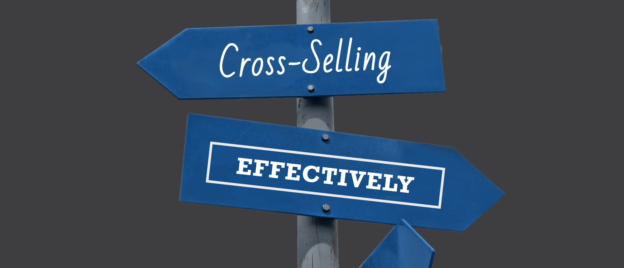Cross-selling identifies services or products that satisfy additional, complementary needs which are unfulfilled by the original purchase. For example, staff training could be cross-sold to a customer purchasing a software package – indeed some might say this is essential.
Often, cross-selling points customers to something they may have purchased anyway, however presenting the product/offer at the right time increases the chances of them making the purchase dramatically. Take the scenario of buying a smartphone; being offered a small discount at checkout for products such as earphones or phone cases will likely influence you to make an extra, albeit lower value, purchase.
It’s a known fact that, on average, the global giant retailer Amazon gets customers to spend roughly 35% more through cross-selling. In another retailer example, well-known coffee shop chains tend to have high percentages of customers respond positively to their question “would you like a Danish pastry to go with your latte today?”
Cross-selling retains customers
Cross-selling is closely linked with customer retention. The reality is that it’s much easier (and more cost effective) to cross-sell products to someone who is about to buy something or has already bought something, than it is to acquire and sell to new customers. However, many SME’s still underinvest or underachieve when attempting to increase business from existing customers.
This infographic from Invesp examines customer retention and how it compares with customer acquisition. It reveals that the probability of selling to an existing customer is 60-70%, while the probability of selling to a new prospect is 5-20%. It also shows existing customers as willing to spend 31% more than new prospects. Yet shockingly, far more companies focus on acquiring new customers then retaining their existing customer-base.
How to cross-sell effectively
As suppliers of products or services, we should always be searching for new ways of providing additional value to our existing clients, both directly and indirectly. The first step should be to develop strong business relationships with all past and present clients/customers. Doing so gives us the opportunity to develop an in-depth understanding of their needs, thus enabling us to offer or suggest solutions that meet those needs.
Cross-selling can then be implemented in a variety of ways (depending on the company).
- In management consultancy, understanding the client’s situation can highlight logical, beneficial next steps for the client once they’ve completed their current project.
- For online retailers, incentivized bundling and advertising relevant additional products at checkout can achieve 1 or more additional sales.
- Small stores and supermarkets can display drinks and snacks at checkouts to encourage additional impulse purchases before customers leave the store.
- Customer loyalty schemes may allow businesses to monitor their customer’s purchase history and then offer relevant products based on that data.
- When in the process of buying a new phone contract, additional mobile data or even handset insurance could be offered as well.
These are just some examples of cross-selling and how it is used. A good understanding of your customers and the products/services you provide will highlight cross-selling opportunities for your business. It is then a case of timing and execution.
For more information on cross-selling or customer retention, please don’t hesitate to get in touch with Paul on enquiry@w-l-p.co.uk.

